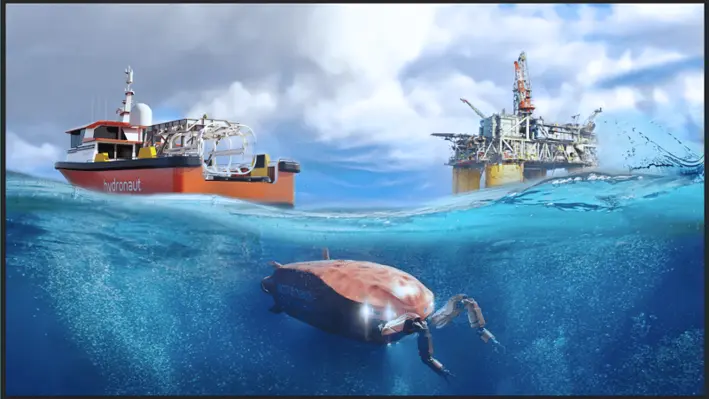

Nauticus Robotics, Inc., a developer of subsea and surface robotic services using autonomy software, has entered into an agreement with Shell to advance to the qualification phase for a more efficient means of acquiring subsea integrity data utilising Nauticus’ Aquanaut and Hydronaut robotic platforms.
The collaboration will enable Shell to add an advanced tool to its subsea asset integrity management lineup with the potential to improve subsea operations. Shell and Nauticus will collaborate with the industry’s leading inspection tooling service providers, to fully integrate into Nauticus’ robotic service solution.
An initial feasibility study for the phase-gated project was recently completed, and the team will now move onto the operational qualification phase, which focuses on remote operations of the robotic duo using supervised autonomy and tool control using Nauticus’ acoustic communication networking technology. The collaboration is targeting the preliminary work required for an offshore pilot project.
Todd Newell, SVP of Business Development at Nauticus, commented, “Working with a leading company such as Shell marks an exciting milestone for Nauticus, and this collaboration further validates the superior capabilities and extensive use cases of our robots across the energy sector. Implementing our supervised autonomous method – one that has proven more robust and dynamic than most of its kind – is expected to provide our partner and future customers more than 50% cost savings compared to today’s methods of operation.”
This collaboration will utilise the Nauticus’ flagship and fully electric subsea robot, Aquanaut, which is deployed from the company’s small surface vessel, Hydronaut –used for the transport, recharge, and communication for Aquanaut, among other tasks. Together, this robotic pair will function as a unified solution to bring a new means of conducting subsea work to the offshore services industry. Their inherent autonomous architectures will allow a transition to far more autonomous operations over conventional solutions.
“An exciting aspect of this project is the opportunity to combine the strengths of advanced inspection tooling with the advanced marine robotic capabilities developed by Nauticus Robotics,” said Ross Doak, Deepwater Robotics Engineer of Shell’s robotics team. “This project aims to fundamentally improve how we collect subsea facility data, through the combination of ‘AUV native’ tooling design, supervised autonomy, and recent improvements in remote communications.”
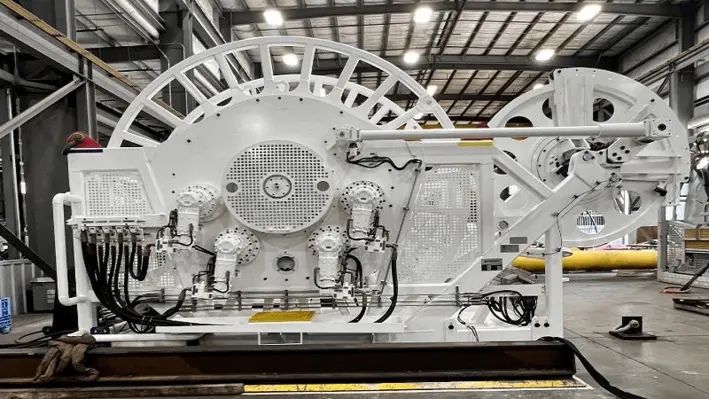

Logan Industries International Corporation, a machine designer, manufacturer, field service and repair company, has successfully delivered a unique, space saving coiled tubing (CT) reeler suite for OneSubsea.
Logan’s CT reelers are coiled tubing winches, where the reelers provide full torque control for the tubing without the need for a standard injector head. This reduces space required compared to standard tubing reeler / injection head combination, and allows for a larger fluid storage footprint on deck. When the equipment required to handle CT has a small footprint, more deck space can be dedicated to hauling fluid, which increases profitability for the operator.
This is the first unit Logan has delivered with a removable drum, which means the unit footprint can remain static on the vessel while the drums can be taken to a shore base for unspooling and respooling. They are transported in a purpose-built DNV lift rated drum basket, fully secured and protected. The swap out drum also makes the machine faster to build, reducing typical assembly time for the drum and drive train from two weeks to two days.
At 15,000 psi working pressure, 10,000 feet of 2 in. CT was provided on the drum, with live swivel and isolation valves on the unit. The suite of equipment provided for this work includes a spare drum, adapter to allow it to fit into most tubing service spoolers at the tubing manufacturer’s facilities, transport basket and lifting set along with the reeler, HPU, control stand and interconnect lines. Logan also provided a purpose-built overboarding platform with a translating / clamshell to accommodate OneSubsea’s unique end connection philosophy.
Dean Carey, Technical Director, Logan, commented, “We placed a work deck, dimple connector, test tool, controls and safeguards on this overboarding platform to give the crew plenty of access to the volume of space under the overboarding point. The overboarding platform also provided a reeler deck loading spreader effect on the vessel’s deck. We believe this is truly the next evolution in coiled tubing deployment offshore, and provides significantly more convenience for our customers. This is one of the most comprehensive reeler equipment suites Logan has had the pleasure to provide, and we expect it to remain in service for quite some time.”


Baker Hughes has announced that it is acquiring AccessESP, a leading provider of advanced technology for artificial lift solutions, to further transform core oil and gas operations by reducing costs and downtime for operators.
AccessESP’s ‘GoRigless ESP System’ provides proprietary solutions that enable an electrical submersible pump (ESP) to be deployed and retrieved with conventional, light-duty intervention equipment without the need for a rig or requiring the well production tubing to be pulled.
These technologies significantly reduce the cost of, and downtime between, workovers used in the replacement of ESPs, which is of increasing importance in offshore and remote areas.
Maria Claudia Borras, Executive Vice President of Oilfield Services at Baker Hughes, commented, “Combining AccessESP’s alternative deployment technology with Baker Hughes’ world-class ESP capabilities creates a truly differentiated solution for our customers. This transaction reinforces Baker Hughes’ commitment to transforming our core business by focusing on leading, future-proof technologies that support growth opportunities and enhance our portfolio.”
AccessESP’s innovative deployment system provides more efficient solutions compared with traditional methods. By reducing heavy intervention, operators can increase oil recovery, efficiency and profitability while reducing costs and managing resources more efficiently. Lightweight intervention systems also reduce HSE risks, while light workover techniques enable ESP maintenance to be completed more quickly and at a lower cost than existing methods.
AccessESP has approximately 55 employees with facilities in North America and the Middle East. The transaction is expected to close in the second half of 2022 and will be integrated into Baker Hughes’ Oilfield Services segment.
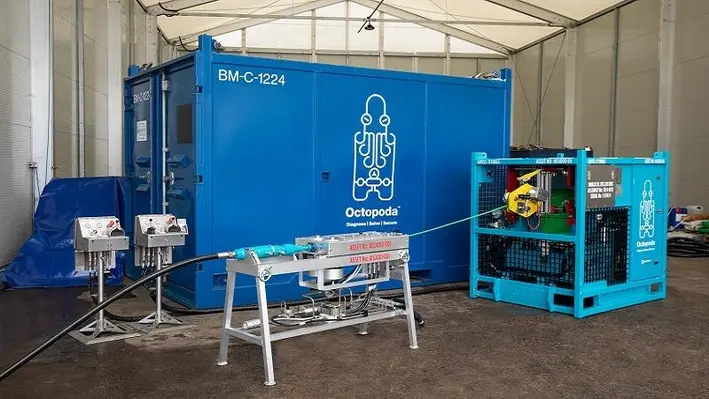

With integrity issues continuing to plague wells across the globe (affecting an estimated 30% of wells around the world), Expro has engineered the Octopoda annulus intervention system to enhance production and assure well integrity without disrupting operations.
According to Expro, the Octopoda is a unique, proven and advanced technological solution which allows direct access to the well annuli which can help bolster production rates, firm up well integrity and allows customers to regain shut in wells and make them economically profitable again.
With advanced corrosion protection for up to 20 years, Octopoda can help create a sustainable impact on asset production and revenue.
In a recent demonstration of its capabilities, Octopoda was used on a Chevron offshore platform well to intervene the A annulus and replace base oil with water ahead of resin placement on top of the packer.
Chevron had previously seen a 50% reduction in the impact of the resin when it was added to an earlier well containing base oil.
Deploying Octopoda meant Chevron avoiding the use of production tubing for circulation via a stimulation vessel or coil. This eliminated the need for communication between the production tubing and the A annulus meaning the barrier remained intact between the reservoir and the A annulus.
Expro displaced the base oil and established circulation by pumping fresh water through the annulus intervention system. Despite experiencing space limitations caused by control lines, clamps, and centralisers.
This was the first time the A annulus had ever been intervened using a conveying hose. Furthermore, it proved the efficiency benefits of Octopoda’s annular intervention over conventional practices by reducing time, costs and personnel. The operation lasted three days compared to an estimated 10-13 days, avoiding the conventional lube and bleed method or the need to punch and circulate the well.
Octopoda’s small footprint compared to a pumping vessel or unit reduced lifting risks and required only a two-man crew from Expro. The base oil was collected in a closed loop in the system, avoiding its exposure to the environment.
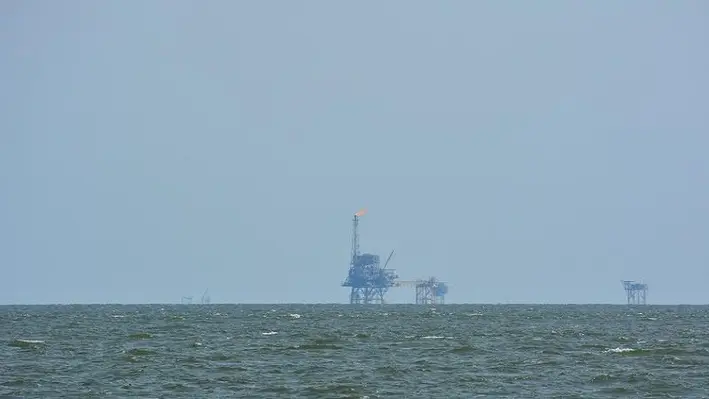

Helix Energy Solutions Group has completed the acquisition of all the equity interests of the Alliance group of companies which will expand its decommissioning presence in the Gulf of Mexico.
The acquisition will also advance the company’s Helix’s environmental, social and governance (ESG) initiatives by responsibly supporting the end-of-life requirements of oil and gas projects.
Owen Kratz, President and Chief Executive Officer of Helix, commented, “We are pleased to have completed our acquisition and added Alliance to the Helix family, which complements Helix’s existing deepwater abandonment offerings by adding shelf and facility abandonment capabilities and significantly enhances our position as a full-field abandonment services provider.
“The acquisition marks a meaningful step in our participation in the Energy Transition, and we are excited to welcome our new colleagues to the Helix family.”
Helix also announced that it has amended its existing asset-based revolving credit facility (ABL Facility). The amendment aligns with Helix’s Alliance acquisition, expanding the eligible credit line and establishing a link in its pricing to sustainability targets. The key features of the amendment include increasing the size of the ABL Facility to US$100mn and including ESG/sustainability-linked performance targets that may result in adjustments to commitment and borrowing rates.
Kratz continued, “We have increased the size of our ABL Facility to accommodate the increase in our expected borrowing base with the Alliance acquisition. We are also pleased to have included a sustainability-linked performance target that may reduce our fees under the facility and we are appreciative of the support from our bank group in this amendment.”
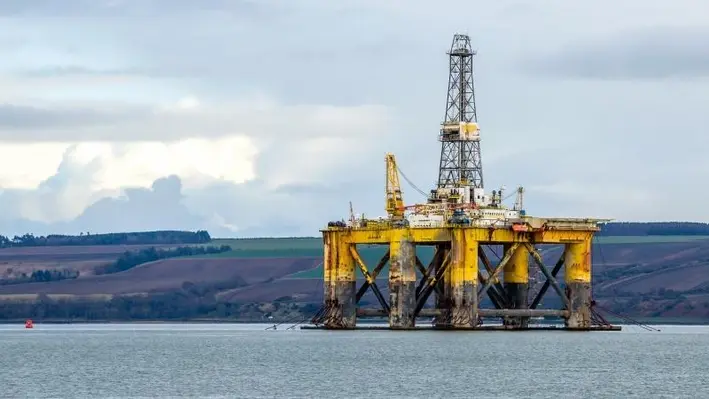

Global well integrity and production optimisation expert Coretrax has successfully deployed the ReLineMNS system across three wells and expanded a total of more than 27,000 ft of tubulars, a world record-breaking project in the Utica Basin, for a major gas operator with its ReLine Expandable Technology.
With one of the expandable liners reaching 9,000 ft in its expansion, all installations smashed the previously held record of 7,243 ft by at least 1,000 ft.
The total setting time from beginning expansion to exiting the top of the liner took only nine hours per well over a total of seven days on location. Covering the well integrity issue with one full-length liner, the overall setting time was significantly less than that of competing products on the market, setting at approximately 1,000ft per hour.
Coretrax’s technology was deployed into each of the wells with a 4.25” outer diameter liner. On expansion of the liner, the post-expansion of the inner diameter was 4.1” with an internal pressure capability of well over 10,000 psi, covering the wellbore issues identified.
Scott Benzie, Chief Technical Officer at Coretrax said, "Our advanced no shoe expandable technology allows operators to effectively isolate well integrity issues and immediately proceed with their next operations without the requirement to drill out a shoe, enabling our clients access to huge time and cost savings on their projects."
“The engineered materials used in the expandable technology ensure reliability is maintained through the operation, resulting in a consistent expansion reflecting our attention to detail.
“Our highly skilled team members from the operations and applications departments were key to the success of this world record, and delivering our valuable services for each well. This project pays testament to the strong and trusting relationship we have built with our client.”


Energy services provider Danos has been awarded the opportunity to support the Promethean Decommissioning Company (PDC) and Petrofac alliance, to decommission multiple facilities in shallow water fields in the Gulf of Mexico.
CEO Paul Danos said, “Danos is honoured to join the efforts with PDC and Petrofac to provide safe and efficient operational and construction support for the alliance. We look forward to planning and executing this project with our partners and applying our 75 years of experience, safety and operational excellence in the Gulf of Mexico.”
The project, which began at the end of May, includes ten platforms, 196 wells and 32 pipeline segments in the South Pass and East Break fields of the Gulf.
This multi-year programme will allow Danos to support the PDC and Petrofac alliance and its decommissioning program with several of its service lines, including production workforce, construction, fabrication, and instrumentation and electrical.
Danos has many years of experience supporting decommissioning work through various service lines in the Gulf of Mexico as well as internationally.
“Having been appointed decommissioning operator for this project, we are delighted to have Danos join us and support the alliance we have formed with Petrofac. Together, our mission is to deliver safe, lean, integrated, best practices and technology-driven decommissioning operations which will reflect the highest ESG standards and include the minimising of GHG emissions/intensity and the environmental footprint of operations. Danos’ experience and knowledge will prove invaluable to the successful delivery of this program,” said Aditya Singh, President of Promethean Energy.
“Danos’ longstanding relationships in the Gulf of Mexico and comprehensive range of services positions them to provide the expertise needed for the programme,” a Petrofac representative said.
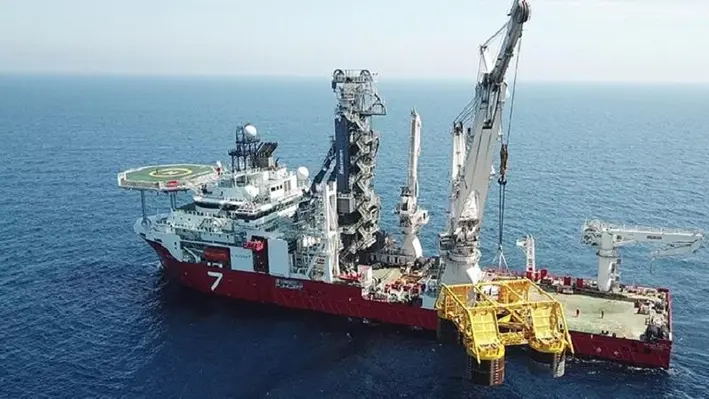

Schlumberger and Subsea 7 have signed an agreement to renew Subsea Integration Alliance for a further seven years.
Subsea Integration Alliance is a worldwide non-incorporated alliance between Subsea 7 and Schlumberger’s OneSubsea subsea technologies, production and processing systems business, to jointly design, develop and deliver integrated subsea development solutions.
Over the past seven years, the alliance has successfully combined the complementary capabilities and market-leading technologies of OneSubsea and Subsea 7, and worked collaboratively with clients to design, develop and deliver integrated SPS and SURF solutions proven to optimise the cost and efficiency of deepwater developments.
John Evans, CEO of Subsea 7 commented, “The success of Subsea Integration Alliance is a result of the drive and commitment of both Subsea 7 and OneSubsea to deliver an enhanced experience and outcome for our clients. Driven by the demonstrable benefits to clients of this mode of collaborating, integrated projects are expected to remain a significant component of the subsea market. We look forward to extending our relationship with OneSubsea as we address the opportunities of the offshore energy market.”
The alliance continues to build momentum and, in recent years, has been awarded major greenfield projects in Australia, Brazil, Africa and Turkey, as well as significant tie-back work in the Gulf of Mexico and Norway.
“Subsea Integration Alliance has proven to be a tremendous success,” said Abdellah Merad, EVP, Core Services and Equipment, Schlumberger. “Having been awarded 12 integrated projects and more than 130 early engineering studies around the world, it has helped– and will continue to help – customers achieve maximum value from their subsea developments through industry-leading innovation and expertise.”


Welltec has formed an exclusive partnership with Isealate AS to become the largest shareholder in the innovative company which provides a patented patch-thru-patch technology.
Chief Commercial Officer at Welltec, Tommy Eikeland, commented, “Well leaks and damages are among the primary concerns raised by our customers during the intervention and workover phase. This acquisition perfectly complements our existing technology portfolio and adds a new dimension in terms of metal expandable capabilities. Once fully integrated, we will be able to set patches and Welltec Annular Barrier technology on either wireline or drill pipe, providing our customers with the ultimate re-lining and repair solutions for well integrity.”
Isealate’s downhole patches can currently be run on wireline and provide multiple benefits typically associated with straddles and larger steel patches without any compromise or trade-offs. The ultra-slim patches have a variety of applications from water-shut off and leak repair, to damaged casing or completion repair, whilst managing to maintain a near full bore ID with minimal restrictions allowing patch-thru-patch operations.
Isealate AS Founder and Board Member, Bengt Gunnarsson, commented, “The integration with Welltec will allow us to bring our unique technology to more operators and deliver it through a global partner with a proven track record. In the meantime, this enables our team to fully focus on further development of the unique patch technology
“Welltec has a truly international field service organisation and management support structure, along with unique engineering, mechanical and electronic capabilities, combined with inhouse manufacturing capacities, which made them the obvious partner choice,” Bengt added.
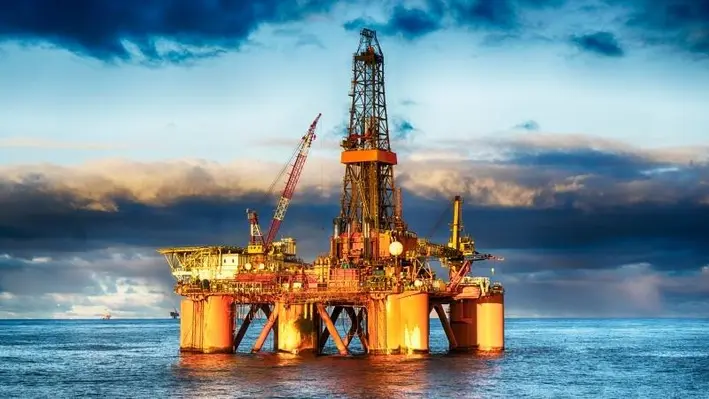
 Helix Energy Solutions Group, Inc. has announced that it has entered into a definitive agreement to acquire 100% of the equity interests of the Alliance group of companies for US$120mn million cash at closing, plus the potential for post-closing earnout consideration.
Helix Energy Solutions Group, Inc. has announced that it has entered into a definitive agreement to acquire 100% of the equity interests of the Alliance group of companies for US$120mn million cash at closing, plus the potential for post-closing earnout consideration.
Alliance is a Louisiana-based privately held company that provides services in support of the upstream and midstream industries in the Gulf of Mexico shelf, including offshore oil field decommissioning and reclamation, project management, engineered solutions, intervention, maintenance, repair, heavy lift and commercial diving services.
Helix said that the transaction aligns with its ‘Energy Transition’ business model, by expanding its decommissioning presence in the Gulf of Mexico shelf and advancing Helix’s ESG initiatives by responsibly supporting end-of-life requirements of oil and gas projects.
The transaction also augments Helix’s decommissioning and life-of-field maintenance service capabilities through the addition of Alliance’s comprehensive shallow water assets, including a fleet of Jones Act-compliant lift boats, offshore supply vessels, a heavy lift derrick barge and diving vessels, as well as plug and abandonment systems, coiled tubing systems and snubbing units.
The deal further positions Helix to further penetrate the North American decommissioning market, with published reports forecasting nearly US$3bn of decommissioning expenditures between 2022 and 2025, and the potential to expand into the global market. Based on the assets being acquired, the parties’ assumptions and market conditions, and anticipating Alliance's potential annual EBITDA in excess of US$30-40mn, the transaction is expected to add accretive free cash flow and diversify Helix’s asset base and revenue stream, at an attractive valuation.
According to Helix, the deal will help in preserving a strong financial position and liquidity, as Helix’s pro forma cash, liquidity and net debt would approximate US$145mn, US$186mn and US$119mn, respectively. The transaction is also expected to enhance the financial performance outlook, with expected continued improvements in free cash flow resulting in expected strong liquidity and leverage position.
Owen Kratz, Helix’s President and Chief Executive Officer said, “Based on a number of markets and regulatory drivers and our current expectations, we fully believe that the offshore oil and gas decommissioning market will grow significantly in the near term. This acquisition complements Helix’s present deepwater abandonment offerings by adding shelf and facility abandonment capabilities and significantly enhances our position as a full-field abandonment services provider, both in the Gulf of Mexico and globally. We also see possibilities to expand our opportunities within our existing late-life production business.”
Steve Williams, owner of Alliance said, “Our recent successes in acquiring and developing businesses and assets to establish Alliance as an offshore shallow water energy services company has led us to Helix, who we see as the industry standard in deepwater energy services.”
The acquisition is expected to close in mid-2022 and is subject to regulatory approvals and other customary conditions.
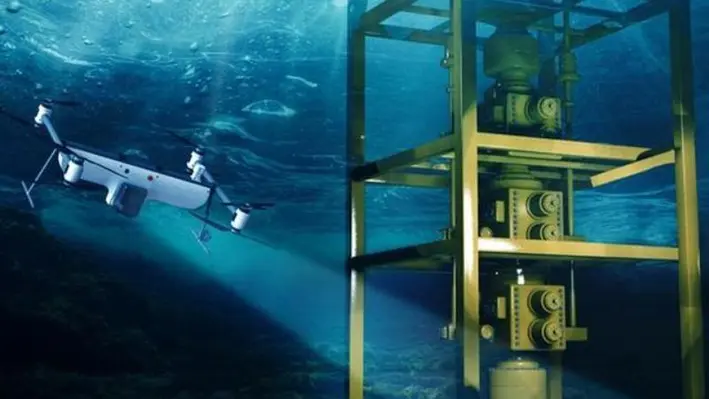

Defuzzy Labs, one of the leading robotics companies specialising in unmanned systems in the UAE, collaborated with SubUAS, the US company behind the Naviator Air/Sea Drone platform, to demonstrate its latest robotics fleet management solution and shed light on the future of offshore inspections.
The demonstration, which was held at the AWS Energy Symposium in Houston, featured the Sharjah-based operator instructing a Naviator drone fleet to perform an inspection from over 11,000 kilometres away, alongside the SubUAS team based in New Jersey, USA.
The live demonstration showcased Defuzzy's latest development of its robotics fleet management solution, which uses AWS's Roborunner service to command multiple Naviator drones over the cloud. This scalable and modular solution enables Defuzzy to easily integrate robots of various makes, models, and forms into the fleet and control them. The cloud services will further help enhance remote monitoring solutions and complete accurate robotic inspections, thus improving the safety and efficiency of inspection operations.
During the demonstration, Defuzzy engineers stationed in Sharjah, UAE, displayed their ability to monitor and command multiple Naviator drones located in New Jersey, USA. The fleet management solution automatically planned a mission and assigned it to the available drone in the background, after which the Sharjah-based operator was seen monitoring the fleet's status and the live video stream of the inspection routine.
Adnane ElSoussi, CEO and Co-Founder, Defuzzy, said, “We are pleased to announce that Defuzzy’s robotics fleet management solution will be used to command a fleet of offshore robotic platforms, which will not just be limited to drones, but a combination of USVs (Unmanned Surface Vessels) and other drones. Our robotic fleet management solution eliminates many challenges associated with inspections of offshore facilities, such as adverse weather and harsh operational conditions, limited and poor communication, availability of multi-talented inspectors, difficulty to access spaces requiring special tooling and equipment, high-risk operational environment, and lastly, high operational costs.”


Petrofac, a leading provider of services to the global energy industry, and Promethean Decommissioning Company (PDC), a pure-play decommissioning operator, will come together to decommission the South Pass 60, South Pass 6 and East Breaks 165 fields, offshore Gulf of Mexico.
The substantial scope of work includes work on nine platforms, 200 wells and 32 pipeline segments, all of which will need to be safely and assuredly decommissioned.
PDC takes on the role of decommissioning operator and is responsible for fulfilling the field decommissioning orders received from the U.S. Department of the Interior’s Bureau of Safety and Environmental Enforcement in February 2022.
Petrofac has been appointed by PDC as the decommissioning services provider in a contract valued at around US$200mn. The company will use its proven decommissioning programme management systems, tools, and processes to deliver the programme.
The PDC-Petrofac alliance has selected Danos, a leading Gulf of Mexico offshore services provider, for more than 75 years to support field operations and the decommissioning programme. With nearly 2,500 employees, Danos has a proven history of operational excellence and safe operations.
The project will be led from Houston, with the integrated alliance team using the latest digital software, including Petrofac’s proprietary project management tool Turus, to deliver the decommissioning project with comprehensive dashboards, transparency and assurance.
Nick Shorten, Chief Operating Officer for Petrofac’s Asset Solutions business, commented, “This significant contract recognises our industry-leading decommissioning programme management experience and our unique in-house capability to manage all well and asset decommissioning phases. It’s been more than four decades since Petrofac first began in Texas and in that time we have expanded our offshore capabilities across the globe. This expertise will be applied to the project, complemented by our already strong onshore presence in Texas.”
Aditya Singh, Founder and CEO, Promethean Energy Corporation added, “We are pleased to offer our new outsourced ‘decommissioning operator’ service to the industry and to commence activity on this major decommissioning project. We are fully aligned with all our stakeholders to improve environmental performance through the safe and efficient decommissioning of end-of-life assets. We accomplish this with a dedicated, fit-for-purpose entity, PDC, via an integrated operating service model and focused programme management. I am particularly pleased that the PDC and Petrofac alliance has been selected, leveraging the complementary strengths of both companies.”
Page 17 of 22
Copyright © 2025 Offshore Network